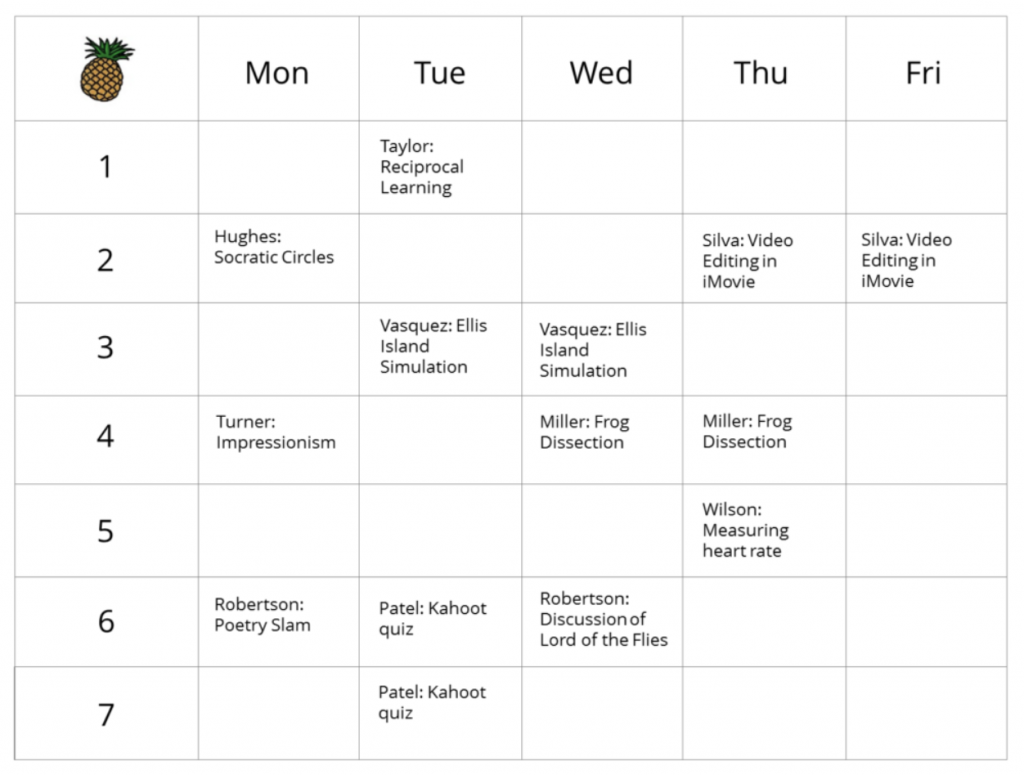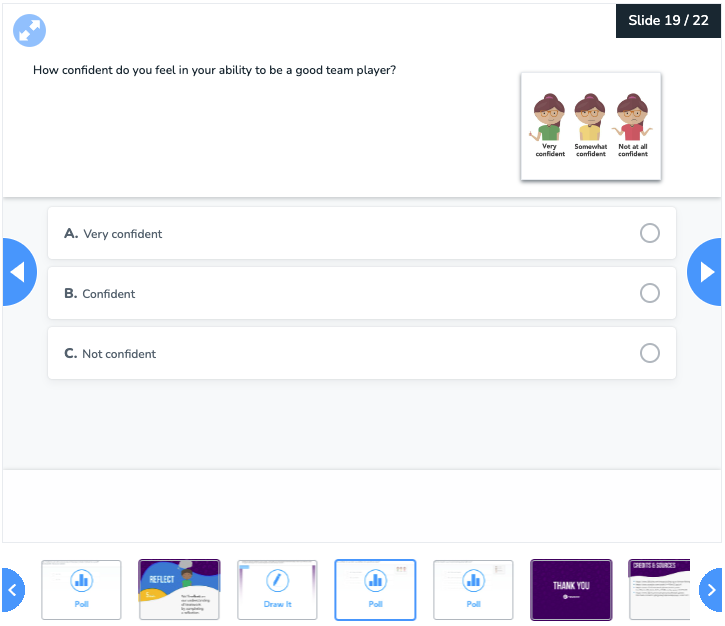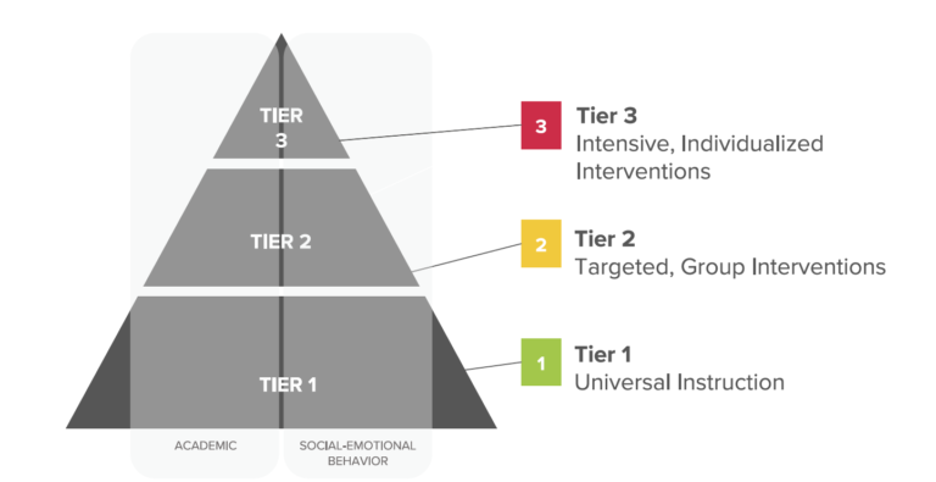
How principals can boost teacher morale and motivation
The teacher morale crisis
In 2022, teacher morale hit an all-time low, and although it has improved since then, it remains significantly lower than it used to be. But why is that?
Tim Pressley is trying to answer that question. Pressley is a professor of psychology at Christopher Newport University who studies teacher morale, development, and effectiveness, and, more recently, the impact of COVID-19 on teachers. Of the decline in morale, Pressley says, “Teachers were burned out, had no job satisfaction, low morale during the pandemic, and that has just continued as we’ve come out of this pandemic.”
During the pandemic, teachers became frontline workers and were lauded as such. But the return to the classroom hasn’t been seamless. Teachers are faced with increased scrutiny and politicization, gaps in student understanding, and navigating mental health concerns for both students and themselves.
With high teacher turnover an ongoing concern, the issue of bolstering teacher morale is more important than ever.
How teacher morale affects learning
Teacher morale directly impacts the quality of their teaching and job retention, which in turn affects student learning and their overall educational experience. Challenges like larger class sizes, increased daily responsibilities, and student behavioral issues have all affected teacher wellbeing.
One study linked the loss of a teacher during the school year to the loss of between 32 and 72 instructional days for students. Other research shows that more than a third of teachers anticipate leaving their current school within the next four years. This turnover can lead to significant costs for schools, in terms of both student learning and the budget.
High job satisfaction is tied to increased productivity, stronger relationships, lower absenteeism, and higher employee retention, all of which lead to an overall increased performance or output. This is why improving teacher morale is critical.
Whether at the elementary, middle school, or high school level, fostering a culture of collaboration and recognition can lead to better outcomes for both teachers and students. Teachers are the heart of a school, and school leaders need to be the stewards of their schools, looking after teacher wellbeing and community as well as student achievement. By making intentional efforts to be aware of and address your teachers’ thoughts, concerns, and needs, you can build a supportive environment where they feel recognized, supported, and valued.
As a principal, how can you help boost teacher morale in an intentional way?
How to raise teacher morale with Nearpod
Nearpod is an educational platform built with teachers in mind. While it can’t solve all your problems, it can give teachers the support they need in the classroom. Our interactive content engages students in authentic and meaningful ways and provides teachers with real-time data that they can use to tailor their instructional approach. Not only does Nearpod help personalize students’ learning journeys, it also bolsters teachers’ professional capacity to meet school and district goals.
New to Nearpod? Teachers can sign up for free below to access these resources, interactive activities, and engaging lessons. Administrators can schedule a call with an expert to unlock the full power of Nearpod for schools and districts.
How principals can boost teacher morale
Boosting morale is about more than a small token of appreciation; it means opening yourself up to conversation and feedback, thinking through your processes, and creating meaningful opportunities for development. Try these teacher morale boosters in your school.
1. Ask for candid feedback
When thinking about how to boost teacher morale, don’t forget to ask teachers themselves. Feedback from your teachers is invaluable. It gives you the opportunity to open a dialogue where their voices and concerns can be heard.
Too often, teachers feel like decisions come from above and are handed down without their input. Highlight how much you value them by including teachers in conversations around key decision points. Ask for and listen to their opinions. When an issue arises, make room for teachers to be part of the problem–solving. This will lift some administrative burden, ensure more buy-in for proposed solutions, and recognize the value of teachers’ experiences and expertise.
Take a data-informed approach to creating an action plan that prioritizes areas of need identified by teachers as well as other stakeholders, such as your school board or other school and district staff. Hearing from multiple voices and perspectives can help you consider things differently.
Administering a school climate survey is an effective way to get input from everyone. You can then use the data from that survey to inform your goals as a school or district. Nearpod can help you distribute your school climate survey via a URL, participation code, or QR code. Once surveys have been completed, you can then use Nearpod to share results and key takeaways. You can even dig further into the numbers using an interactive Poll or Collaborate Board activity to further unpack findings.
By sharing that feedback with your teachers and other staff, and then acting based on that feedback, you aren’t just telling them you’re listening, you’re showing them.
2. Invite teachers to the table
Too often, educators feel like decisions come from above and are handed down without their input. Highlight how much you value your staff by including them in conversations around key decision points. Show that they are stakeholders by asking for and listening to their opinions. When an issue arises, make room for teachers to be part of the problem solving. You will ensure more buy-in for the proposed solutions. In addition, not only will you lift some of your administrative burden, you will also be raising the visibility of teachers’ experiences and expertise. Plus, teachers are a wealth of innovation and imagination! Leadership is about cultivating a culture of mutual respect:
- Invite teachers to PTSA meetings
- Ask for peer nominations to have teachers on any site-based leadership team
- Make time for vertical planning sessions
- Organize listening sessions around site priorities
- Have an open-door policy or time earmarked for office hours
- Encourage all educators to lead or present at staff meetings
- Create school-based teams, such as a Student Intervention Team, Culture Committee, Curriculum Adoption, Arts Education, etc.
3. Welcome the newbies
In any given year, you may have new staff members. Make sure to have a solid onboarding plan to welcome in new members of your teaching team and make sure that any change management goes smoothly. Make and take time to get to know new staff personally as well as professionally. You may want to give them a veteran staff buddy so that they have support in the moment and from all sides. Share your coaching style when it comes to both formal observations and informal classroom visits, so you build an atmosphere of credibility and trust.
4. Integrate technology thoughtfully
Teachers are asked to do a lot in their classrooms, and depending on the technology being utilized, it can be a help or a hindrance. The number of edtech tools in schools has nearly tripled, but just because you have them doesn’t mean that they’re being used. Tech fatigue is real! How much teachers actually utilize these resources depends on how user friendly and helpful they are, as well as how easily they can be integrated into their instruction.
At Nearpod, we pride ourselves on being easy to use and integrate into the classroom. Our library of 22,000+ standards‑aligned lessons, videos, and activities can help save time lesson planning and increase student engagement. Because an educational platform should make teachers’ lives easier, not harder.
Make sure you’re giving teachers the time and support they need to use these tools and platforms effectively. Look into the options available to your school or district and choose one that will meet the needs of your teachers as well as your students. This will help ensure a more seamless rollout and increase teacher motivation for more regular use.
5. Lead by example
The educational landscape is constantly evolving. As school or district leaders, consider the ways that you can consistently model how to be an instructional leader. Take a human-centered design thinking approach, and do regular empathy work where you visit classrooms and observe. Take it all in: What’s working? What is unique? What is impactful? Your visits will also illustrate to your staff and the student body that you are interested in and invested in their day-to-day work.
It’s likely that you have a wealth of experience and expertise on your staff. Find ways to showcase those exemplars to celebrate their efforts and provide peer-to-peer learning opportunities:

- Encourage your staff to do informal visits themselves to reflect on their own pedagogy. Try creating a Pineapple Chart where teachers can schedule time for such observational visits to one another’s classrooms to see new practices in action.
- Or, carve out 15-minute periods for teaching teams to take learning walks, where collectively they tour classrooms with an instructional focus in mind, sparking collaboration and reflection.
Nearpod also makes it turnkey to share lessons with colleagues. And then remind your teachers that they can customize and personalize shared lessons by copying and modifying existing activities—no need to re-create the wheel!
6. Motivate teachers with genuine praise
When teacher and staff morale is low, sometimes an extra word or signal of encouragement or praise can go a long way. It doesn’t always have to be public praise, but a simple acknowledgment of a job well done has exponential effects. When you visit a classroom, try leaving a sticky note that headlines something specific that you saw in action that worked really well. Teachers often work in isolation, siloed in their four walls. Teachers are the ultimate innovators, as each and every teaching and learning activity can be a type of formative assessment, so highlight what you thought was effective, since it may be a new technique, resource, or activity that your teacher is trying. Also, remember that your teachers understand extrinsic and intrinsic motivation for teaching probably better than most, so they definitely will appreciate a shiny sticker or note of a job well done, too!
7. Establish clear intervention programs
Teachers need to know what support programs are in place for students with additional academic and behavioral needs. They shouldn’t feel that they have to be the sole problem-solver when your school can act as a support network and collaborate on solutions.
Revisit your school’s intervention programs and policies for referring students. If you haven’t already, you may want to adopt a schoolwide framework such as Multi-Tiered System of Supports (MTSS) or Positive Behavioral Interventions and Supports (PBIS). Such shared understanding and structure across a school or district can help you take a collective approach to support each student’s individual needs and help educators feel supported.
Nearpod provides MTSS by offering real-time insights into student understanding through our nine types of formative assessments. With this information, teachers can individualize and tailor their instruction and deliver high-quality, whole-group instruction (Tier 1), target group interventions (Tier 2), and intensive, individualized support (Tier 3).
8. Offer meaningful professional development opportunities
Put time and effort into designing meaningful staff meetings and providing relevant professional development opportunities. Teachers need training that confronts the immediate issues they deal with on a day-to-day basis. They need to be trained in the systems, teaching methods, and curriculum that they are required to use in their classrooms, and their PD opportunities should reflect those requirements and expectations.
Consider asking your team, as a part of your school climate survey, what they are most interested in or most eager to learn more about, during the coming school year. You may want to consider a choice-based model, where teachers have options for which areas interest them the most. Teachers need engaging learning experiences, too!
9. Build collegiality
In promoting school culture and community, you want your staff to work together as a team. Education is a high-stakes profession, and recently, 44% of K-12 teachers reported feeling very often or always burned out at work. There is strength in numbers, so help your staff lean on one another so that they don’t feel isolated or alone. In addition to buddying up teachers and providing emotional wellness resources, build teamwork and encourage true relationships between your staff members. Infuse some fun into your employees’ dynamics. Try:
- Exercising together with a neighborhood walk or yoga break
- Scheduling shared meals or downtime to just chitchat
- Offering out-of-school social events, such as a happy hour or movie night
- Suggesting themed days for teachers (and/or classrooms) around school spirit
- Organizing a meal train where each teacher receives a surprise dinner to bring home
Start improving teacher morale today
Boosting teacher morale is essential for creating a positive and productive environment in any school. By supporting work-life balance and providing resources for effective classroom management, principals can help educators feel more valued and empowered. As a principal, you play a critical role in the culture of your school and can have a big impact on teacher morale. It’s worthwhile to take a step back and reflect to make sure you are building strategies to consistently and authentically boost teacher morale and champion a positive school culture. The good news is, if you’re already thinking about how to improve teacher morale, it means your head is already in the right place.
New to Nearpod? Teachers can sign up for free below to access these resources, interactive activities, and engaging lessons. Administrators can schedule a call with an expert to unlock the full power of Nearpod for schools and districts.

Darri Stephens is a dedicated LX (learning experience) designer, passionate about creating quality content and programs for kids, families, and educators. With MAs in Education from both Harvard and Stanford, and work experience at best-in-class ed tech organizations including Wonder Workshop, Nickelodeon, and Common Sense Education, she is steeped in the design thinking process and committed to agile and iterative project management, which has resulted in multi-award-winning programs and products.



